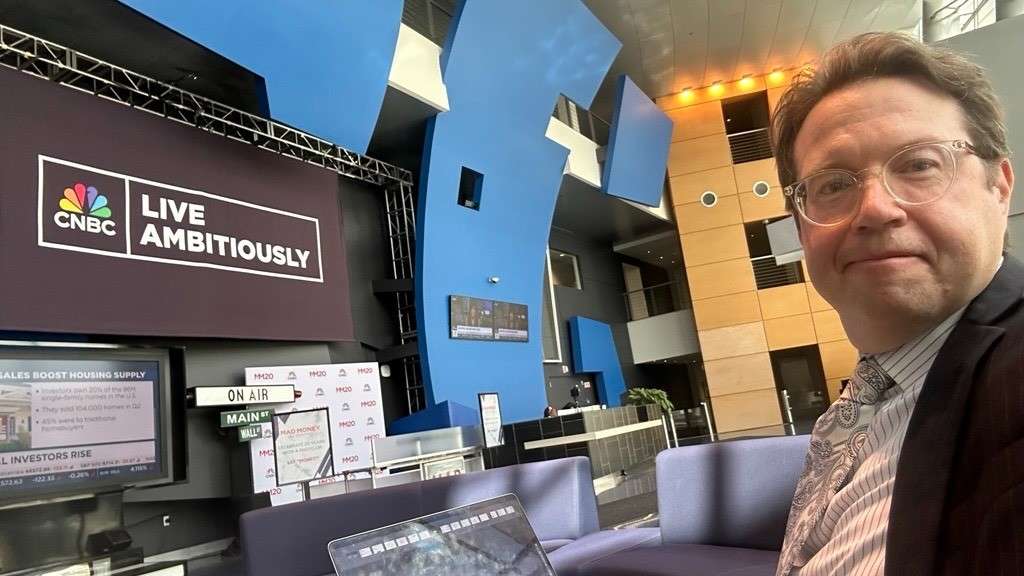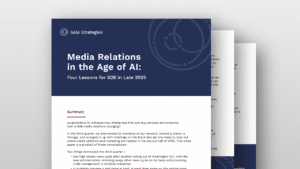We often get asked “How do you get your clients on national TV?”
The answer is you have to understand that a national television broadcast schedule is finite real estate in an era of near infinite digital and commodified news spaces. It’s also live, adding to its finitude. Anything that gets attention needs to be relevant to the most valuable movements in markets that hour, and for the coming week.
In short, you have to truly earn that attention.
Most stories, companies or investors don’t rise to that occasion, which is as it should be. And it’s not a question of how many drinks you’ve had with members of the CNBC staff or being a second cousin of a producer.
How evocative and how much evidence does your story have that your story that week provides a valuable insight that fits with most of the rest of the news expected that day and week?
Here’s a transparent look at what it actually takes to warrant and manage a top-tier broadcast interview — from pitch to post-production.
Before the Interview: The Groundwork That No One Sees
The journey starts long before the cameras roll, or at least before the digital packets of data get warmed up.
Before a producer even replies to an email, we’ve already done a fair amount of heavy lifting — watching the news cycle carefully, seeing who’s focusing on what, and anticipating what’s going to be in the news next, refining the story in relation to that, and matching it to the right show, and making sure our client’s expertise aligns with what the network is talking about that week.
And let’s be clear what refining means. It doesn’t mean spinning and trying to force the story you want to sell into the news. It means being confident enough to drop the stuff that’s not relevant, focus on the stuff that’s relevant, and figure out how the stuff that takes some care and involves some risk to tell, can be shared prudently.
- Building the right narrative: CNBC isn’t looking for company updates — they’re looking for insights backed by new evidence that move markets or explain trends. We craft a pitch that connects our client’s perspective to breaking financial or industry news.
- Timing is everything: Broadcast runs on news cycles, not marketing calendars. Landing a segment often means being ready to pivot quickly when a relevant story hits. Our client was taking calls with producers, often with very little notice, on weekends, from the road, whatever it takes. You’re on their schedule, not the other way around.
- Relationships matter: Having trusted relationships with the producer (or in this case, working to understand what matters to them and the role of shared stories and histories) helps make you worth paying attention to, but the story has to deliver. The best pitches are clear, timely, and make the producer’s job easier.
During the Interview: Managing the Moment
Once the opportunity is secured, the focus shifts to performance.
We work closely with the client to prepare — not to script them, but to help them show up like a pro.
- Media training: Even seasoned executives need practice translating complex topics into clear, TV-friendly responses. Some call them soundbites, but really it’s just practice in saying things succinctly and in an authentically engaged manner.
- Logistics and coordination: From studio booking to camera angles, wardrobe guidance, and tech checks — broadcast interviews are a choreography of details. And we are onsite to help coordinate every step of the way, without getting in the way.
- Real-time support: On the day of the interview, we’re in touch with producers, monitoring live coverage, and ensuring everything runs smoothly from both sides without losing the invite by getting self involved.
It’s a mix of adrenaline and precision — and when you finally hear the anchor introduce your client live on air, it’s a special kind of thing.
Why? Because again, that three to five minutes is special real estate in the day. If you’ve earned a place in it, it’s because your story truly does matter.
After the Interview: Celebrate the Moment
The segment doesn’t end when the cameras stop rolling — that’s when the celebration occurs.
- Clipping and sharing: We secure the final recording and share it across the client’s owned channels — LinkedIn, website, newsletters, internal communications, and more.
- Earned-to-owned storytelling: Earning the attention of CNBC and warranting time in the news day is a mark of your place in the news and business cycle. And we help clients weave it into the appropriate place in their story and evolution.
Final Takeaway
Top-tier media coverage doesn’t happen by luck — it’s built on respect for the news, journalists, and an appropriate strategy, combined with thoughtful persistence, and open partnership.
If you’re a business leader or marketing executive aiming for national broadcast exposure, remember: you have to earn it and work for it, and because of that it’s not just about the moment on screen. It’s about the honest and real story, the prep, and the people behind it who make it happen.
At Gale Strategies, we help clients find where these things exist, earn these moments — and make sure they fit into your ongoing story in the right place.




